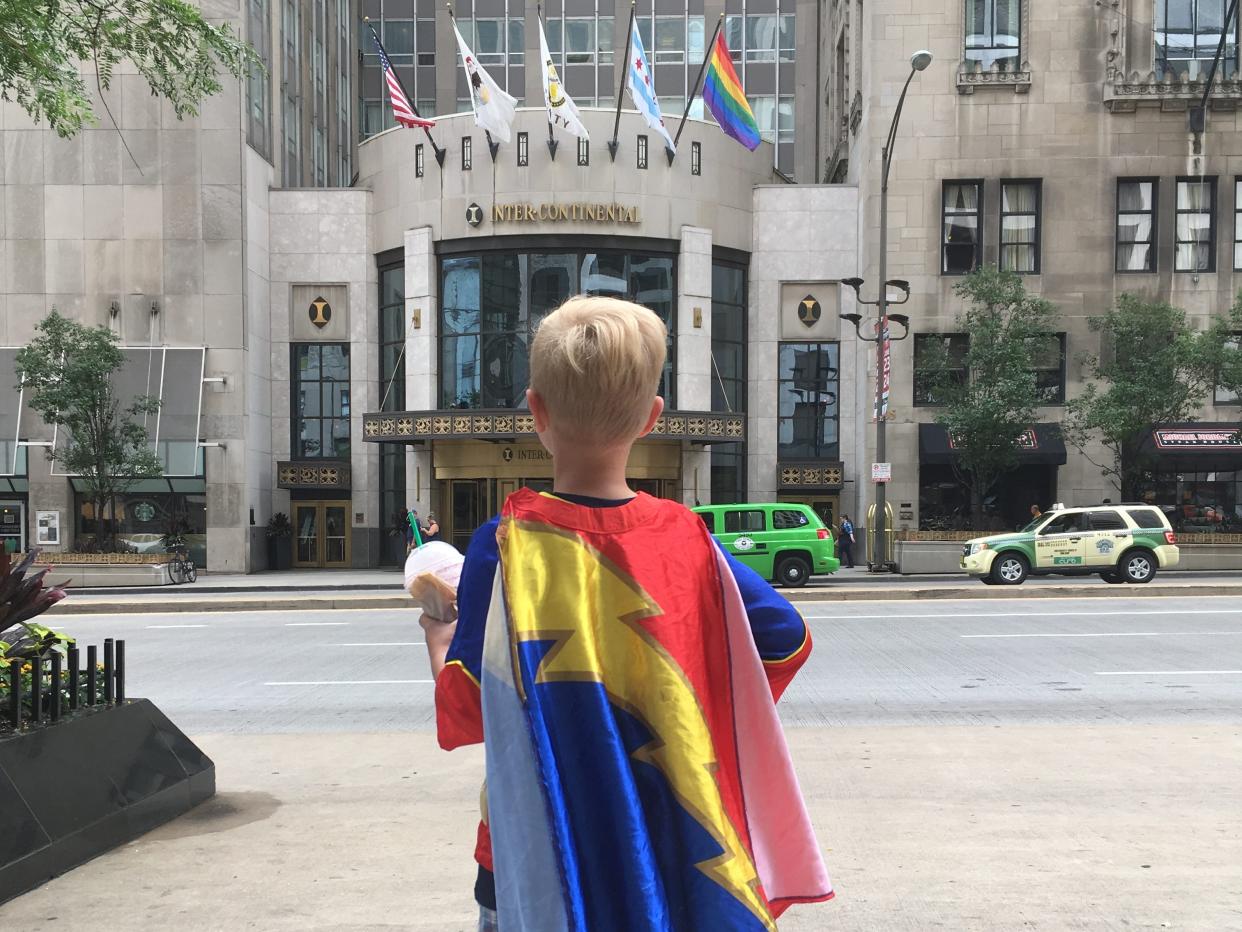My teen came out as nonbinary at 13. Here's what the last 3 years have taught us.

A few years ago, my teen came out as nonbinary.
I had to first learn what nonbinary meant to my teen and how I could be a better ally.
We also take our child to safe spaces, while ensuring our home and school are safe for them, too.
A few years ago, our youngest child shared they were nonbinary at 13 years old.
At the time, I didn't know what that meant and didn't know anyone to turn to for advice. As their mother, I felt lost, confused, and uncertain of how to support my child.
Over the last few years, my teen has taught me what nonbinary means — going beyond the definition. They've helped me understand how to be an ally, how to support, how to help face day-to-day challenges, and how to be a safe space.
I had to first learn what nonbinary meant
The day they shared that they were nonbinary, I started searching for definitions and experiences to have an educated conversation with my child.
I found a definition that spoke to me. The Human Rights Campaign defines nonbinary as "an adjective describing a person who does not identify exclusively as a man or a woman. Nonbinary people may identify as being both a man and a woman, somewhere in between, or as falling completely outside these categories."
I learned that my child is the true expert on their own experiences and meanings. From there, I asked my teen to share what nonbinary means to them and their preferred pronouns.
My child uses they/them pronouns, and it was tricky for me to use the new pronouns at first. But whenever I made a mistake, I learned to quickly correct myself. I also learned to be OK with my child correcting me when I make a mistake.
Ultimately, my teen told me they are not a fan of labels and prefer people to know them not by their gender, sex, or sexuality — but by them as a person.
I had to learn what it meant to be an ally to my kid
Being an ally can entail various actions, such as using the correct pronouns and name, educating yourself, creating safe zones, and educating others.
Early on, I made the mistake of relying on my child to tell people and explain what nonbinary means. I didn't realize the burden I was placing on my kid. Now, we check in with each other to see if they want me to share, if they want to share, or if they want to say nothing unless necessary.
Other times, I proactively tell people. I've shared what nonbinary means with colleagues, friends, grandparents, and other parents. Educating others increases awareness which is key to building a more accepting and safer world for my child.
Our child also wears a pin almost daily that says, "They, Them, Theirs." When we are out, this pin is a friendly reminder for everyone to use the proper pronouns.
We have found and frequent safe spaces
Our local coffee shop proudly displays a Progress Pride flag, signifying it's a safe and accepting place. They also have gender-neutral bathrooms, and that's important to my teen.
Another place with gender-neutral bathrooms? Their therapist's office. The facts and statistics on suicide rates among LGBTQ+ are distressing. Therapy provides some peace of mind. They have someone they trust, and I know they regularly speak with a trained professional.
I also learned to ensure that my house is a safe place, too. I make it clear to visitors that this is a safe space by displaying pride flags outside and inside. Also, we always ask and use our child's friends' preferred names and pronouns.
Finding and creating these safe places for my child has been helpful in feeling accepted and supported.
We had to learn how to navigate high school
High school — for any kid — is an opportunity for them to explore, learn about themself, and find their people.
This can be challenging for LGBTQ+ young people, especially those who are nonbinary, like my teen.
We've had to discuss the dynamics of bathrooms, locker rooms, and lunchrooms. I wanted my kid to feel like their school was another safe space, so we discussed accommodations with their guidance counselor.
One accommodation our high school makes is allowing my child to change in the nurse's office and use a staff gender-neutral bathroom.
All of these lessons have helped my child feel safe in a world that isn't always accepting of nonbinary people.
Read the original article on Business Insider


